Wed 15 Jul 2020
Owls, buzzards, and other skunk eaters
Posted by DavidMitchell under Photography, Point Reyes Station, West Marin nature, Wildlife
Comments Off on Owls, buzzards, and other skunk eaters
Caveat lectorem: When readers submit comments, they are asked if they want to receive an email alert with a link to new postings on this blog. A number of people have said they do. Thank you. The link is created the moment a posting goes online. Readers who find their way here through that link can see an updated version by simply clicking on the headline above the posting.
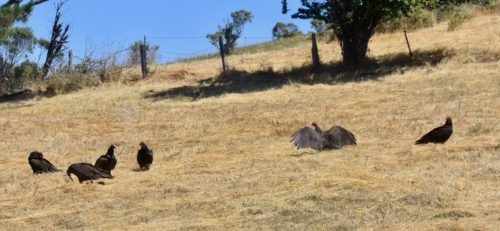
Six buzzards landed on the hill above Mitchell cabin last Saturday, immediately letting Lynn and me know that something had died.
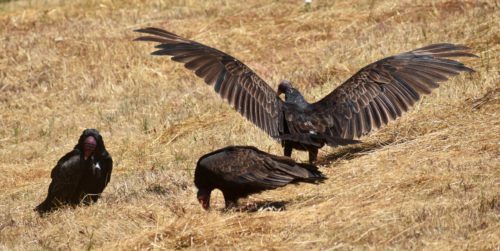
We could see one buzzard tearing away at a carcass. But of what?
(Before going further, I should acknowledge the “buzzard” v. “vulture” dispute I occasionally get into with a few readers who apparently prefer British English to American English. For them, vulture is the only correct name for the species, and buzzard means only Buteo hawk. I disagree, and my authority is The American Heritage Dictionary. It defines the word buzzard as: “1. Any of various North American vultures, such as the turkey vulture. 2. Chiefly British. A hawk of the genus Buteo, having broad wings and a broad tail. 3. An avaricious or otherwise unpleasant person.”)
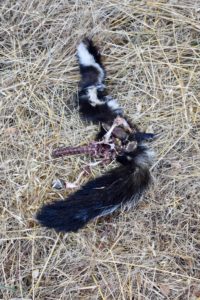
Upon closer inspection (despite the stench) I could see the deceased was a skunk. My guess is that it was killed by one of the great horned owls on this hill. Because of the likelihood of getting sprayed, coyotes and foxes reluctantly hunt skunks only when no other prey is available. Great horned owls, whose weak sense of smell is limited to supplementing their sense of taste, like to hunt skunks.

A great horned owl. (Missouri Department of Conservation photo)
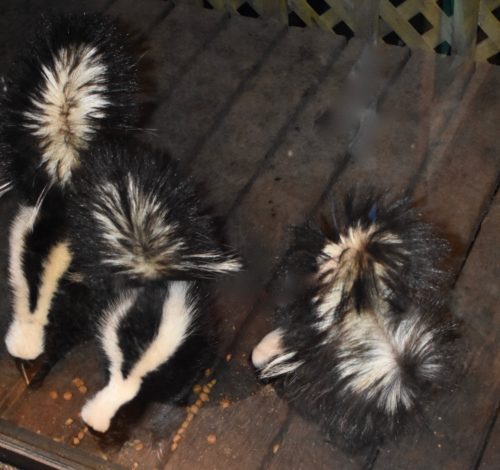
Female skunks typically raise four to six kittens in a season, with the males leaving the females before the young are born. Skunks were once widely hunted for their pelts, but they now have far more to worry about from motor vehicles; skunks are so near-sighted they can’t see things clearly that are more than 10 feet away.
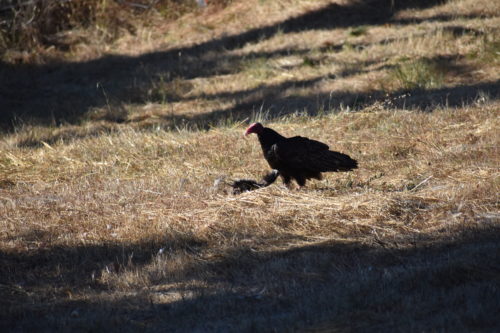
This buzzard arrived a day late for Saturday’s feast but still found enough skunk flesh to nibble on. Buzzards are fond of dead skunks, but they leave the skunks’ scent pouches intact.
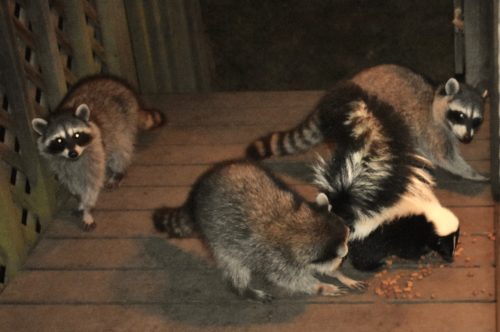
Raccoons, like dogs, identify each other by sniffing bottoms, and (as seen here before) they also sniff skunk bottoms but for some reason don’t get sprayed. Two nights ago I saw a very young kit repeatedly sniff a skunk’s rear end. The skunk didn’t like it and kept moving away, but the kit persisted in nosing around back there until the skunk finally walked away.
At least it didn’t get killed and partially eaten by an owl with most of the leftovers consumed by a flock of buzzards.

No Responses to “ Owls, buzzards, and other skunk eaters ”
Sorry, comments for this entry are closed at this time.